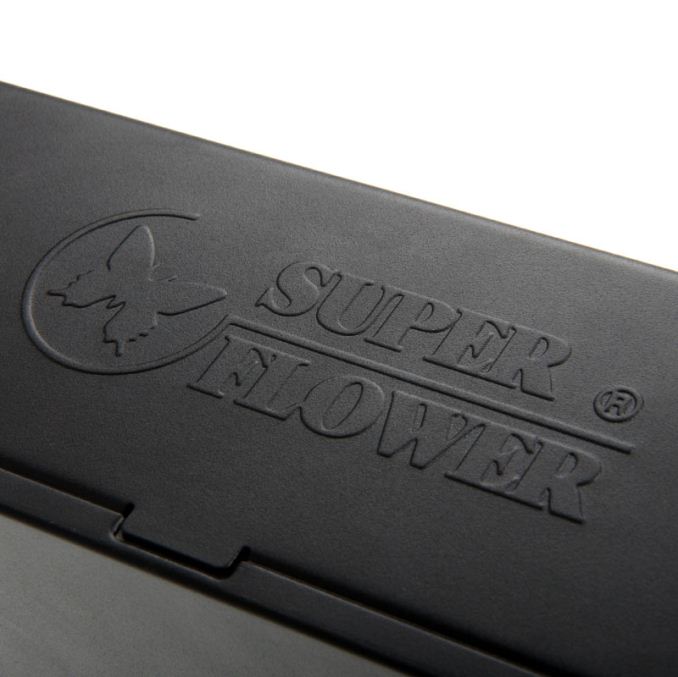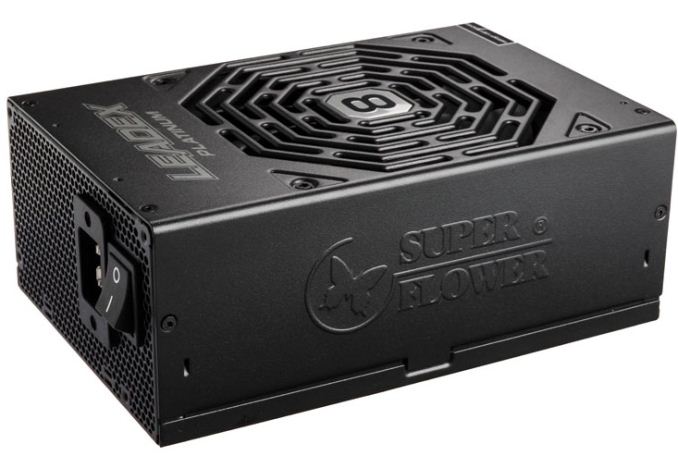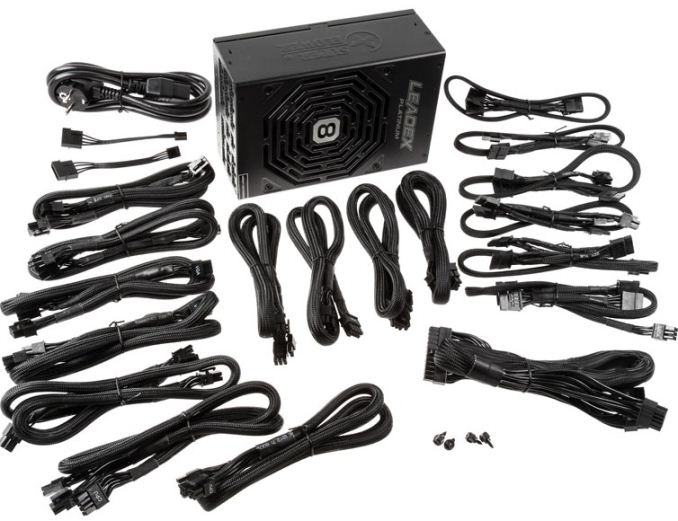Super Flower & 8Pack Release the World's First 2kW Consumer PSU
by E. Fylladitakis on January 30, 2015 2:30 PM EST- Posted in
- Cases/Cooling/PSUs
- Super Flower
- 2000W
- leadex

A new record was broken today, as Super Flower announced the release of the most powerful consumer PSU ever made, the Leadex Platinum 2000W. The PSU has been allegedly developed with the collaboration of Ian "8Pack" Parry, one of the most reputable overclockers worldwide, and in association with OverclockersUK.
The power specifications of this monster are certainly impressive. It is 80Plus Platinum certified and the single 12V rail that can output up to 166.6A, implying a certain fire hazard if that current were to be drained from a single connector. It also sports a fully modular design, which is a good thing for a PSU with twenty cables. The choice of a simple dual ball bearing 140mm fan is questionable for a product with such a price tag, but it obviously is not primarily designed with low noise operation in mind.
Huge numbers are certainly impressive, but let us also remember that the power requirements of a typical gaming PC hardly are a quarter of what this monster can output. Not even highly advanced multi-GPU systems require such power. Simply put, if you own anything less than an overclocked system with four GPUs, this product has nearly zero practical value. For example, in Ian's dual X5690 system with four AMD 7970 GPUs, he pulled 1550W with some basic overclocks on a 1600W PSU, meaning that a full sub-zero OC system has room to breathe with 2000W at hand.
With computer PSUs, bigger is not necessarily better, as the efficiency of the unit peaks at about 50% of its maximum power rating and declines if the load decreases or increases. Actually, due to their design, the efficiency of most switching PSUs plummets if the load is lower than 20% of the unit's rated capacity. Therefore, buying a very powerful PSU in order to have "better performance" and "headroom" is not always such a good idea, but for those who need it, 2000W could have practical applications.
Source: OverclockersUK












65 Comments
View All Comments
obsidian24776 - Saturday, January 31, 2015 - link
You maybe right, that's definitely not a UK plug. our plugs have three pins!Notmyusualid - Saturday, January 31, 2015 - link
+1. Not UK at all.close - Monday, February 2, 2015 - link
It's EU plug. Made for a standard 220V 16A plug.close - Monday, February 2, 2015 - link
Although lately they're pushing it up to 230-240V.fokka - Friday, January 30, 2015 - link
well, there's a whole world outside the US, large parts of which running on 240V with 16A breakers mostly (i think), soo...Samus - Saturday, January 31, 2015 - link
Many homes with 15A breakers can safely be swapped to 20A if the wiring is rated for 20A (which most quality wiring over the last 60 years is.)Residential construction since the 80's often already has 20A breakers for kitchen and bathroom outlets. Chances are the same wiring is used throughout the house, but 15A breakers were used for bedrooms for "safety" to prevent people from running two space heaters or too many electronics in such a small room.
Simply put, check you wiring, and if it's 12 gauge (some 14g is good for 20A) you can replace the wall receptacle and the breaker with a 20A (good for 2250 watts)
If you have 16 gauge wiring such as some cheaper BX/Romex, your SOL. It's also obviously a problem if you rent since you'll need landlord approval to change anything.
Even if you don't need 2000W, this PSU can still safely provide ~1675W DC on a 15A circuit (they're good for 1750W) and I personally prefer not to push my PSU's above 80% load for efficiency and acoustic reasons...so for the most part, a 15A breaker is adequate for many users.
This is am amazing product. I'm surprised it's even being marketed. 166A @ 12V is amazing, that's more than most alternators and could even jumpstart a small car!
juhatus - Saturday, January 31, 2015 - link
This is aka "quick guide burning your house". Its safe!Poik - Saturday, January 31, 2015 - link
I pray you're not involved in construction but know you're the kind of guy who gives me all kinds of problems to fix after you're done.I'm an electrician and maybe the US is different but while I've seen many things I've never seen 16 gauge wire for anything outside of an extension cable - which I have seen used to wire an addition. Older homes would be more likely to be wired in knob and tube than BX. Not many homes of any vintage use steel studs and few people are willing to pay double for an armoured cable that provides no benefit over a standard lumex/romex cable.
Also your 20A breaker is only good for 1920W not 2250W. If you used a 25A breaker you'd then be able to run 2400W without any issues while still only using a #12 wire. A standard 15A breaker is only good for 1440W.
I have no idea where you're pulling your numbers from but wow everything you've said is wrong.
Some key points...
No #14 wiring in your house is rated for 20A.
Breakers are only rated to hold 80% load.
How do you figure if someone made a few circuits 20A compatible that everything would be? To go from 14/2 to 12/2 you're looking at a price increase of about 30% on wire alone. To stop multiple space heaters or too many electronics? Are you kidding me? How's a 20A breaker solve anything? It will hold slightly longer than a 15A breaker if you plug in 2 1500W space heaters. Whoop Dee Doo.
Also please remember that general circuits are general circuits and this PSU needs special attention! Personally even if I had this PSU on a dedicated circuit I'd want it on a 25A circuit for overhead and for accessories (like a monitor) and I'd also want to be using an actual 20A NEMA cord otherwise you risk fire or other potentially serious complications. (melting power cords, overloaded breakers, etc etc)
Coup27 - Saturday, January 31, 2015 - link
Poik - I found your comments about breakers being rated for 80% of their load interesting anf found the following information:UL Standard 489 states that circuit breakers must carry 100% of their continuous current rating
indefinitely (without tripping) at 104° F (40° C) in free air. QOU circuit breakers should be applied, per the NEC, to carry 80% of their continuous current ratings in the intended enclosure. The continuous current rating is indicated on the handle of each circuit breaker.
I presume this is something unique to the US market? I am an electrical design engineer in the UK and spec MCB's (what we call them) in most the control systems I design and I have never heard of this before nor has it ever been mentioned in any manufacturers technical data.
Notmyusualid - Saturday, January 31, 2015 - link
That irked me too.I've a DC example for you; If I install 25A DC breakers for a telecoms rack, I know it will take 25A+ to trip it. If configuring / provisioning extra circuit packs / shelves on an existing rack, I simply must up the load rating of the breakers installed. Otherwise things can get 'trippy'. :)